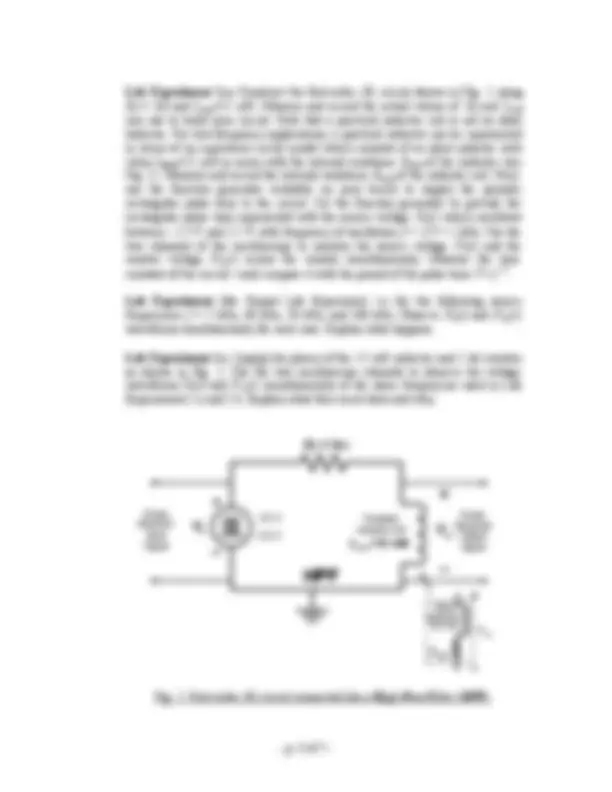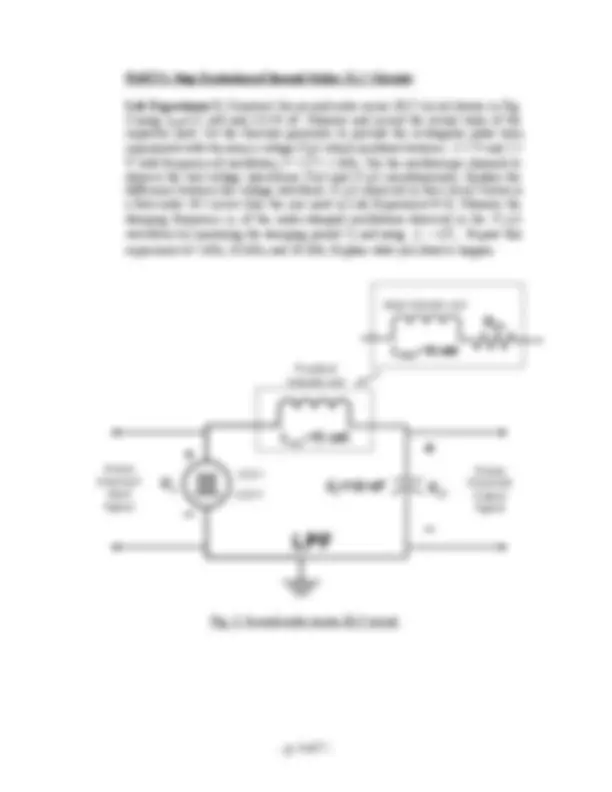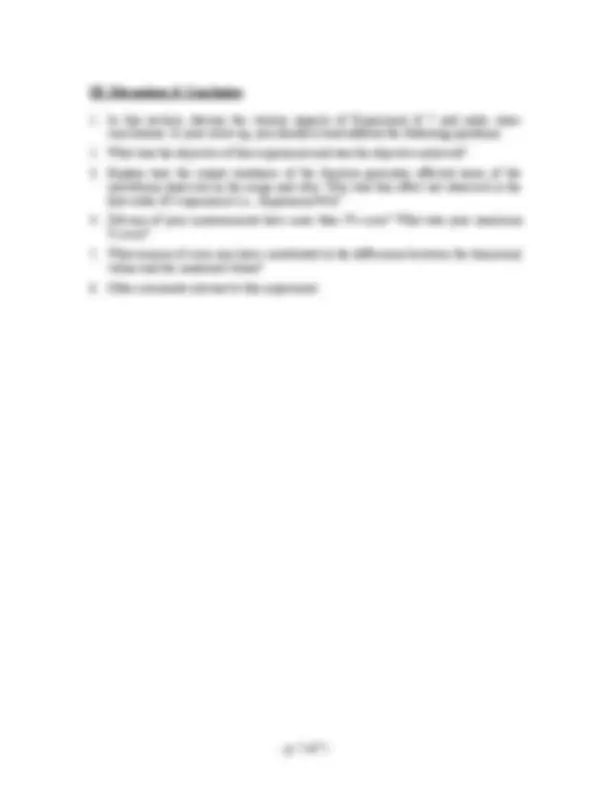





Study with the several resources on Docsity

Earn points by helping other students or get them with a premium plan


Prepare for your exams
Study with the several resources on Docsity

Earn points to download
Earn points by helping other students or get them with a premium plan
Community
Ask the community for help and clear up your study doubts
Discover the best universities in your country according to Docsity users
Free resources
Download our free guides on studying techniques, anxiety management strategies, and thesis advice from Docsity tutors
Material Type: Assignment; Professor: Inan; Class: Electrical Circuits Laboratory; Subject: Electrical Engineering; University: University of Portland; Term: Spring 2004;
Typology: Assignments
1 / 5

This page cannot be seen from the preview
Don't miss anything!




I. Objective
In this experiment, the students will make measurements and observations on the transient step response of simple RL and RLC circuits.
II. Procedure
PART 1: Step Excitation of First-Order RL Circuits
Pre-lab Assignment 1: A first-order inductive circuit is excited by a periodic pulse train as shown in Fig. 1. The values of the elements are given by R 1 =1 kΩ and L coil=15 mH respectively. Assuming the inductor to be ideal, calculate the time constant τ of this circuit. Approximately how long does it take for the inductor of this circuit to fully charge or discharge under pulse excitations? (Fully charge or discharge means the time it takes for the inductor current to reach approximately 99% of its final value.)
Fig. 1. First-order RL circuit connected like a L ow- P ass F ilter ( LPF ).
2.5 V 2.5 V
Scope Channel Output Signal
Scope Channel Input Signal
LPF
L coil=15 mH
Practical inductor coil
Ideal inductor coil R coil=?
L ideal=15 mH
Low-frequency equivalent circuit for a practical inductor coil
PART 2: Step Excitation of Second-Order RLC Circuits
Lab Experiment 2: Construct the second-order series RLC circuit shown in Fig. 3 using L coil=15 mH and C 1 =10 nF. Measure and record the actual value of the capacitor used. Set the function generator to provide the rectangular pulse train represented with the source voltage V S( t ) which oscillates between −2.5 V and 2. V with frequency of oscillation f = 1/ T = 1 kHz. Use the oscilloscope channels to observe the two voltage waveforms V S( t ) and VC 1 ( t ) simultaneously. Explain the difference between the voltage waveform VC 1 ( t ) observed in this circuit versus in a first-order RC circuit (like the one used in Lab Experiment # 6). Measure the damping frequency ωd of the under-damped oscillations observed in the VC 1 ( t ) waveform by measuring the damping period Td and using fd = 1 Td. Repeat this experiment at 5 kHz, 10 kHz, and 20 kHz. Explain what you observe happen.
Fig. 3. Second-order series RLC circuit.
VC 1
2.5 V 2.5 V
V S
Scope Channel Output Signal
Scope Channel Input Signal
C 1 =10 nF
Practical inductor coil
Ideal inductor coil R coil
L ideal=15 mH
III. Discussions & Conclusion